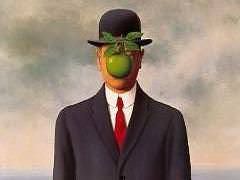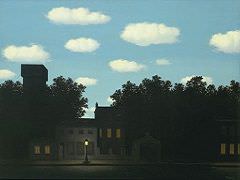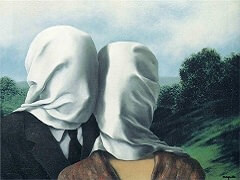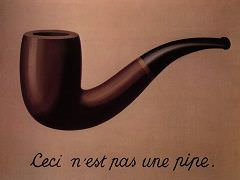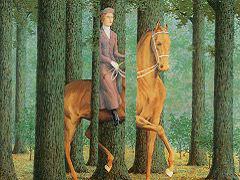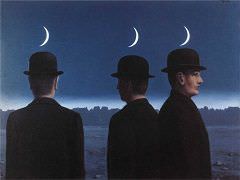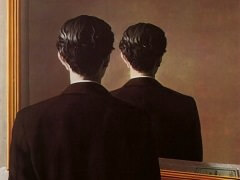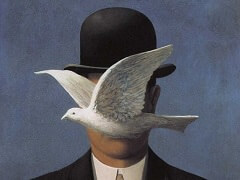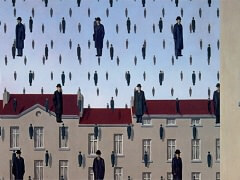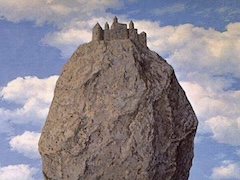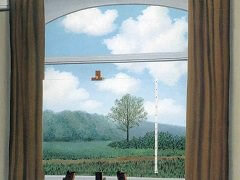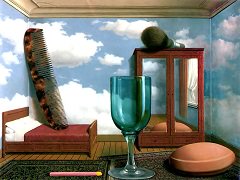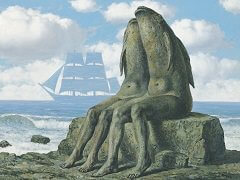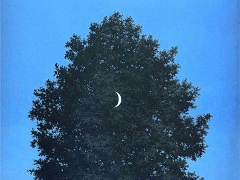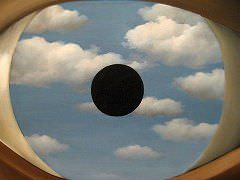Natural Encounters, 1945 by Rene Magritte

The experience of this painting can be like a strange encounter. First and foremost, there is the soft violet color of the wall's surface which dominates the entire canvas, becoming warmer and deeper near the bottom in the floor and in the purple-red tones of the two odd mannequins.
The cutoff at chest height of the two bilboquet-mannequins and the absence of any converging lines creating perspective make it impossible to gauge the distance of the figures from the wall or the dimensions of the room. Converging lines appear only in the window frames. The left-hand window is seen from the right, the right-hand one from the left, and the latter also appears to have slipped down at an angle; the fall is accentuated by the horizon of sea and clouds, visible through the window. This is almost the only suggestion of a world outside, of a third dimension, which is indicated inside the room solely by the two moon-pale mannequins - two strange "halfway creatures" with the eyes of animals and small snouts - and by two strange windows which have lost their normal fixed relation to the wall through the collapse of the right-hand window. This is a world which has become insecure and labile, in which neither the window nor the wall itself collapses, although the relationship between them is ambiguous. The wonderful feature of this canvas lies in the bright daylight of the real world beyond us, isolated and visible in a concentrated way within the rectangle of the upright window.
Thus the "encounter" is not between the two mannequins, not between the viewer and the picture, but between the exterior and interior worlds. This is precisely where Magritte is always at his best - the level at which contradictions do not cease to exist but lose their significance, because, in a moment of illumination, we descend so deeply into ourselves that we begin to participate in the meeting of these two worlds.

